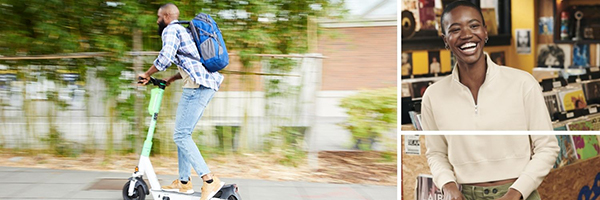Call them what you will: Post-Millennials, Neo-Digital Natives or Zoomers. The most important thing to remember about Generation Z is that they represent a huge, influential group of people. And they’re your next customer.
It’s no coincidence that many members of Gen Z also fit right into that new place we’ve been exploring: Newtopia. This is a generation born between 1997 and 2012 (roughly); the first to grow up into a world connected by easily-accessible mobile technology. While individual tastes can vary, Gen Z values inclusivity, pragmatism, innovation and life experiences over the accumulation of wealth or ownership of physical goods.
As you look more closely at Generation Z, a few common threads begin to stand out when you’re trying to get their attention (in a good way).


Gen Z is Diverse
According to the Pew Research Center, Generation Z is the most ethnically diverse generation yet, and “represents the leading edge of the country’s changing racial and ethnic makeup.” The communities they form are based on common beliefs rather than physical characteristics or geographical proximity. When it comes to fashion and apparel, they expect to see this diversity reflected in your business.
This goes beyond cultural and racial diversity. It challenges traditional notions of gender, ability and beauty. A WGSN whitepaper calls it “radical inclusivity” or “allclusive,” defining this as encouraging people to “persevere despite the physical conditions that might otherwise have discouraged them from speaking up.”
When you’re thinking of apparel for Gen Z customers, remember that their approach to both the workplace and the team also embraces this inclusivity. Their clothes should be adaptable to multiple sizes and differently-abled team members. The best ways to achieve this are often the simplest – removing unnecessary details and going back to basics. Familiar, comfortable basics like racerback tanks, joggers and full-zip hoodies are welcome in the Gen Z wardrobe.


Gen Z is Educated
While many members of Generation Z are still in school, that same Pew Research study tells us that so far, they’re more likely to graduate high school and enroll in college. And it’s not just traditional education — Gen Z is receptive to learning from videos and online resources about everything from auto repair to personal finances to science.
One of the things they focus on in their learning is climate change. This is more than a cause for Gen Z — for them it represents a real and growing threat that they grew up with, and it influences both their lifestyle and their career choices. Universities are aligning with this trend, with specific programs that connect educational disciplines with sustainability and the environment. This can include anything from scientific field work to financial services and sustainability consulting.
But even someone who’s trying to minimize their personal impact and make positive changes in the world probably still needs clothes to wear. To appeal to the educated, climate-conscious customer, a focus on apparel made sustainably and ethically simply makes sense. The new C-FREE fabrication — made from recycled polyester and neutralizing their environmental impact with carbon offsets — represents the kind of thoughtful, intentional apparel Gen Z is on the lookout for. Choosing recycled fabrics and manufacturing processes that trace back to ethical origins shows that you understand their concerns and want to be a part of changing things for the better.



Gen Z is Collaborative
Collaborations have long been a part of the fashion and beauty world, but the rise of social media and communications technology have given this type of work new life in almost every modern human endeavor. “They are agile by nature,” says Hamutal Schieber, founder and CEO of Schieber Research. “They respond to trends and ideas, and these tend to require flexibility and quick thinking.”
The “collab” is a vehicle for putting ideas together in unusual ways. They “create delight and offer meaning, uniqueness and customization,” Schieber goes on to say, “all of which seem to be prerequisites among Gen Z consumers.” For example, take a look at Carhartt WIP and their work with Stray Rats, a clothing brand informed by punk sensibilities, American counterculture and hardcore nostalgia. Not necessarily a brand you’d initially match with traditional, hardworking Carhartt — and that’s exactly the point. It challenges expectations and makes something unique out of a familiar name.
Your collaboration skills will come into play when it comes to working with members of Generation Z. It’s best to not assume that it’s business as usual – listening more and trying to control less is often the sweet spot. If your customer is looking for outdoor gear, for example, understand that their concerns about climate change might mean including caps with sun shades and long-sleeve shirts, both with built-in protection against UV rays. Your willingness to collaborate with them on what works best will be critical to attracting a long-term Gen Z customer.


It’s hard to believe that we’re still in the process of figuring out how Generation Z fits into the world that previous generations have left them, while we’re also already planning a name for the next generation. I’m excited to see what Generation Alpha brings into the picture as Gen Z settles into their rhythm.
Next month, we’ll go back to basics and take a look at the timeless, elemental style of the smart wardrobe. Hope to see you then!
